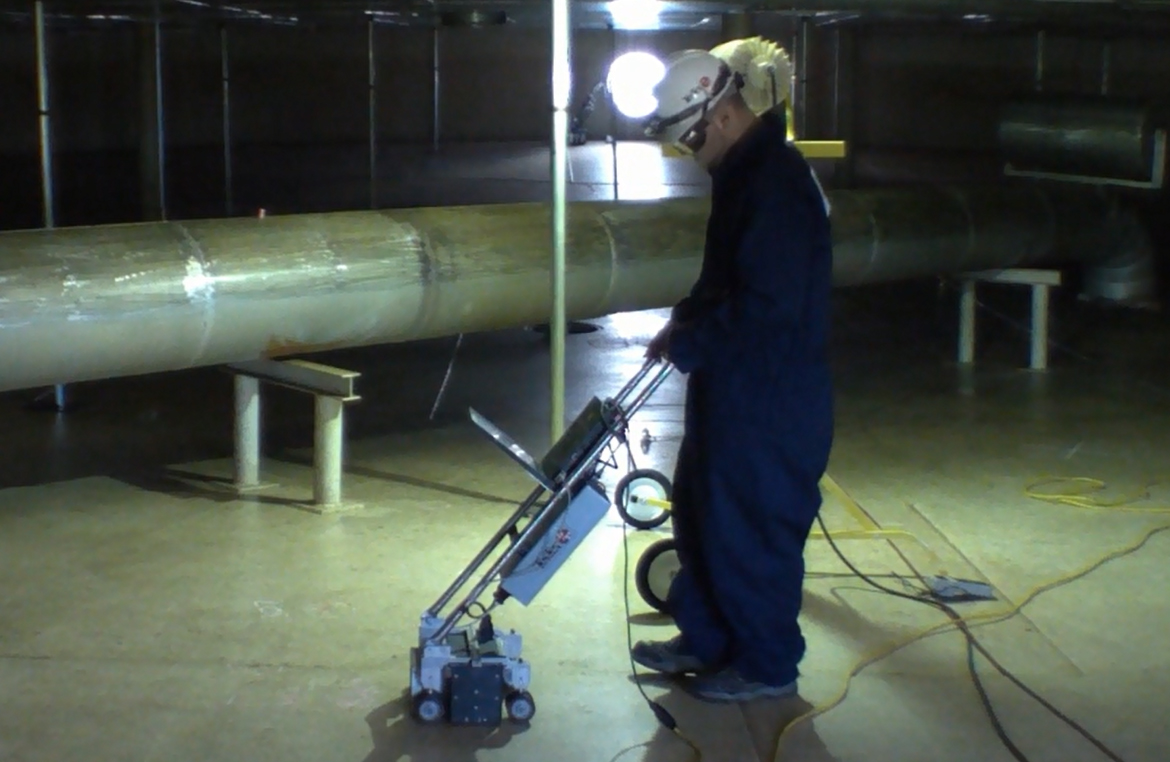What to Anticipate Throughout a Thorough Tank Welding Inspection
Wiki Article
A Detailed Summary of Container Welding Inspection Specifications and Methodologies for Improved Weld Top Quality and Performance
The relevance of welding assessment requirements in the manufacturing of storage tanks can not be overstated, as they serve as the foundation for making certain weld honesty and functional dependability. Various inspection strategies, consisting of visual assessments and advanced non-destructive screening techniques, are vital in identifying potential imperfections that might jeopardize performance.Significance of Welding Inspection Requirements

Welding evaluation standards incorporate a variety of requirements, including product specs, welding procedures, and qualifications of workers associated with the welding process. By implementing these standards, organizations can methodically identify and remedy potential problems, therefore reducing the probability of pricey repair services or devastating failings. Rigorous evaluation practices foster a society of responsibility and precision, motivating welders to keep high levels of craftsmanship.

Usual Welding Examination Strategies


Ultrasonic Checking (UT) is one more prevalent strategy, making use of high-frequency sound waves to spot internal imperfections that might not show up on the surface. This approach is especially effective for recognizing spaces or inclusions within the weld steel. Magnetic Bit Evaluating (MT) is also extensively utilized, especially for ferromagnetic products, as it reveals surface area and near-surface flaws through the application of electromagnetic fields and ferrous bits.
Additionally, Fluid Penetrant Testing (PT) identifies surface-breaking flaws by applying a penetrant to the weld and after that utilizing a programmer to extract the penetrant. Each of these techniques adds to a comprehensive examination technique, ensuring that welds satisfy the stringent top quality standards called for in tank building and construction.
Regulatory Requirements and Compliance
Governing standards and conformity are essential elements in ensuring the safety and security and reliability of bonded frameworks in storage tank building and construction - Tank Welding Inspection. These standards offer to develop minimum requirements for product residential or commercial properties, welding treatments, and examination practices, thus reducing the risk of architectural failings and boosting total performanceSecret companies, such as the American Society of Mechanical Designers (ASME) and the American Welding Culture (AWS), provide guidelines that are commonly taken on in the industry. Compliance with these requirements not just ensures adherence to best methods yet additionally meets legal and legal commitments, guarding the interests of stakeholders.
Regulative bodies commonly mandate adherence to specific codes, such as ASME Code Section IX for welding credentials and API 650 for welded storage tanks. These content codes detail requirements check my site for welding strategies, qualifications of workers, and screening techniques to verify weld honesty.
Normal audits and evaluations are important to keeping compliance, as they assist determine variances from developed requirements. Non-compliance can result in significant penalties, project delays, and safety hazards. Thus, a robust understanding of regulatory criteria and a dedication to conformity are vital in attaining high-quality and durable welded container frameworks.
Non-Destructive Testing Methods
Just how can the integrity of welded structures be ensured without creating damages? Non-destructive testing (NDT) methods offer a durable option, allowing inspectors to evaluate weld top quality without endangering the material - Tank Welding Inspection. Among one of the most typical NDT methods are ultrasonic testing (UT), radiographic screening (RT), magnetic bit testing (MT), and color penetrant screening (PT)Ultrasonic testing employs high-frequency acoustic waves to find interior flaws and identify product homes. It offers specific dimensions and is particularly reliable for thick products. Radiographic testing entails passing X-rays or gamma rays through the weld, producing photos that reveal architectural flaws such as cracks or gaps. This method is very useful for examining the integrity of intricate welds.
Magnetic bit screening is suited for ferromagnetic products, where electromagnetic fields expose surface area and near-surface interruptions. Dye penetrant testing makes use of a liquid dye to highlight surface-breaking imperfections, making it an effective technique for non-porous products.
Each of these NDT methods has distinct advantages, permitting extensive analyses tailored to particular products and welding processes. By executing these strategies, industries can guarantee the integrity and safety of welded structures, inevitably enhancing overall efficiency.
Enhancing Weld Top Quality Through Evaluation
Efficient examination plays a crucial function in improving weld top quality, acting as a vital checkpoint in the construction process. By determining possible issues early, inspections reduce the danger of jeopardized architectural stability and make sure conformity with sector criteria. Using a mix of aesthetic exams, non-destructive screening (NDT) methods, and mechanical evaluations, inspectors can identify problems such as porosity, splits, and incomplete blend.Executing a robust evaluation procedure not only improves the overall top quality of welds yet additionally cultivates a society of responsibility among welders and producers. Routine training and accreditation of evaluation personnel ensure that they are equipped with the necessary abilities to acknowledge and deal with potential problems properly. This aggressive technique reduces rework and associated prices, eventually adding to project performance.
Moreover, extensive documentation of examination searchings for offers valuable insights right into persisting problems, facilitating continual enhancement in welding practices. By leveraging innovative innovations, such as automated ultrasonic testing or electronic radiography, weld high quality can be enhanced via a lot more precise analyses. In final thought, a rigorous examination process is indispensable in attaining premium welds, ensuring security, reliability, and long life in tank manufacture.
Final Thought
In final thought, the application of strenuous tank welding evaluation requirements and techniques is essential for guaranteeing weld stability and try this website efficiency. By making use of a combination of visual evaluations, non-destructive testing methods, and adherence to regulative requirements, organizations can successfully determine and alleviate possible flaws.Report this wiki page